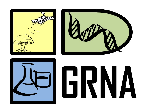Banca de DEFESA: DINALVA RIBEIRO DE OLIVEIRA
Uma banca de DEFESA de MESTRADO foi cadastrada pelo programa.DISCENTE : DINALVA RIBEIRO DE OLIVEIRA
DATA : 27/02/2020
HORA: 09:00
LOCAL: Sala 103 - Campus Amazônia
TÍTULO:
Evaluation of the antiophidic potential of the aqueous extract of corama Kalanchoe brasiliensis Cambess (Crassulaceae)
PALAVRAS-CHAVES:
traditional use. medicinal plant. aqueous antiophidic extract.
PÁGINAS: 65
GRANDE ÁREA: Outra
ÁREA: Ciências Ambientais
RESUMO:
Kalanchoe brasiliensis, popularly known as corama, is widely used in the form of tea or poultice in the Western Region of Pará, to block or mitigate the local effects caused by Bothrops atrox poisonings. The aqueous extract of its leaf has already been tested against the venom of Bothrops jararaca (southeastern jararaca), and there are no studies that prove its effectiveness against the venom of the northern jararaca (Bothrops atrox), which is the main cause of snakebites in the region. Thus, the objective of this work was to evaluate the anti-phallic potential of the aqueous extract of K. brasiliensis, prepared according to traditional use. For this, leaves of K. brasiliensis were collected at Escola da Floresta, Santarém / Pará - Brazil. The preparation of the aqueous extract of K. brasiliensis (EAKb) was in accordance with traditional use (leaf juice). The B. atrox (VBa) venom was acquired from adult snakes from the Tapajós National Forest. The phytochemical profile of EAKb was evaluated by thin layer chromatography (CCD), and the determination of phenolic compounds by colorimetric assays. The cytotoxicity and antioxidant activity of the extract were evaluated using MRC-5 cells. The antiophytic potential of EAKb was evaluated against the coagulant and phospholipase activities induced by VBa, using pre-incubation protocols (poison: extract) and without pre-incubation. The interaction between poison and extract was performed by SDS-PAGE electrophoresis. In addition, the extract was tested to block the main bacteria described in the oral cavity of snakes such as Morganella morganii. In the EAKb prepared according to traditional use, the presence of flavonoids, terpenes, tannins and coumarins was detected. However, when evaluating the content of phenolic compounds by measurement it was not possible to quantify flavonoids and tannins. The extract was not considered toxic and showed 46% antioxidant activity in the concentration of 20 µg / mL. EAKb totally inhibited clotting activity when pre-incubated with the poison. However, in the protocol without previous incubation, the maximum block was 14.1%. Regarding phospholipase activity, in the no pre-incution protocol, EAKb inhibited 58.4% (1:30, poison: extract), and in the pre-incubation the maximum block was 31.6% (1:10, poison :extract). EAKb was effective in inhibiting the growth of 11 of the 12 microorganisms evaluated, with emphasis on The results obtained indicate that EAKb has anti-phallic properties against the B. atrox venom, and studies are needed to investigate which mechanisms of action and specific targets for each biological effect, mainly local, that allows its use in a safe, effective and that proves traditional knowledge.
MEMBROS DA BANCA:
Presidente - 011.678.013-42 - VALÉRIA MOURÃO DE MOURA - UEA
Interno - 1190556 - RICARDO BEZERRA DE OLIVEIRA
Externo ao Programa - 1782412 - ALFREDO PEDROSO DOS SANTOS JUNIOR
Externa à Instituição - SANDRA LAYSE FERREIRA SARRAZIN




